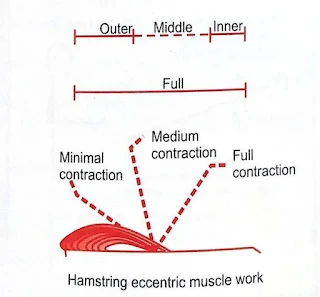The degree of the movement done by muscle contraction is known as the Range of muscle work. The range can be measured with the help of a goniometer. Movement is a very complex mechanism, a lot of muscles are working in a group and in synchronized pattern to draw out the perfect desirable movement. As per function we already talked about Agonist, antagonist, Synergist, and fixator muscles.
Range of Muscle Work
in this Blog we will discuss The range of Muscle work, To produce a movement, the group of muscles has to contract or stretch. there are 4 types of muscle ranges. which are,
- Full range
- Inner range
- Middle range
- Outer Range
Full range of Muscle WorK
The full range in which a muscle work refers to the muscle changing from a position of full stretch and contracting to a position of maximal shortening. The muscle is moving the joint from the fully stretched position to full contracted position by means of concentrically or from a full contracted position to full stretched Position by means of eccentrically.
the full range of Movement required in normal day to day life activity.to maintain full ROM in patients such muscle work is required. so we can say that The full range is divided into Outer Range, Inner Range, and Middle Range.
Inner range of Muscle Work
The muscles move the joint from the medium contracted position to the full contracted position
(Concentrically) or from a minimum contracted position to the full stretched position ( Eccentrically ). Extreme inner range movements are difficult to perform and it requires more numbers of motor unit contractions.
The middle range of Muscle Work
Muscle moves the joints between the minimal range to the medium range. There are no fully stretched or fully contracted muscles seen. This is the range which we use more in our day - to - day life. In this range, the muscle has the maximum strength. Exercise in this range increases muscle power, strength, and tone.
Outer range of Muscle Work
The muscles move the joint from the stretched position to the minimal contracted position ( Concentrically ) or from fully contracted to the medium contracted position. Outer range movements also are very much difficult to perform. While performing the outer range movement, the angle of pull will be adverse and some of the energy is used for the compression of the articular surface. The gravity also resists the movement, so that our range movement will be difficult to perform.






Comments
Post a Comment